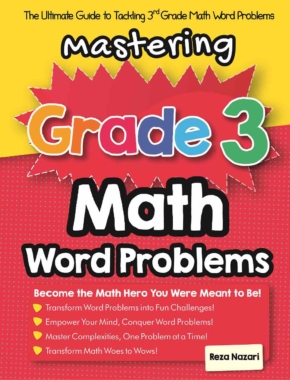How to Solve Compound Interest Problems?
Compound interest is an interest that is accumulated on the principal and interest together over a given time. In this article, let's familiarize ourselves with solving compound interest problems.

Simple interest is interest that is paid only on the principal of money, while compound interest is interest that is paid on principal and compound interest at regular intervals.
Related Topics
A step-by-step guide to solving compound interest problems
Compound interest is the interest paid on principal and interest that is combined at regular intervals. At regular intervals, the interest so far accumulated is added to the existing principal amount and then the interest is calculated for the new principal. The new principal is equal to the sum of the Initial principal, and the interest accumulated so far.
Compound interest \(=\) interest on principal \(+\) compounded interest at regular intervals
The compound interest is calculated at regular intervals like annually( yearly), semi-annually, quarterly, monthly, etc.
Compound interest formula
The compound interest is calculated after calculating the total amount over some time, based on the interest rate and the initial principle. For an initial principal of \(P\), rate of interest per annum of \(r\), period \(t\) in years, frequency of the number of times the interest is compounded annually \(n\), the formula for calculation of amount is as follows.
\(\color{blue}{A=P\left(1+\frac{r}{n}\right)^{nt}}\)
The above formula represents the total amount at the end of the period and includes compound interest and principal. In addition, we can calculate the compound interest by subtracting the principal from this amount. The formula for calculating compound interest is as follows:
\(\color{blue}{CI=P\left(1+\frac{r}{n}\right)^{nt}-P}\)
In the above expression:
- \(P\) is the principal amount
- \(r\) is the rate of interest (decimal)
- \(n\) is the frequency or no. of times the interest is compounded annually
- \(t\) is the overall tenure.
It should be noted that the above formula is a general formula when the principal is compounded \(n\) several times in a year. If the given principal is compounded annually, the amount after the period at the percent rate of interest, \(r\), is given as:
\(\color{blue}{A=P\left(1+\frac{r}{100}\right)^t}\)
\(\color{blue}{C.I.=P\left(1+\frac{r}{100}\right)^t-P}\)
Compound interest formula for different periods
The compound interest for a given principle can be calculated for different periods using different formulas.
Compound interest formula – quarterly
If the period for calculating the interest is quarterly, the profit is calculated every three months and the amount is combined \(4\) times a year. The formula to calculate the compound interest when the principal is compounded quarterly is given:
\(\color{blue}{C.I.=P\left(1+\frac{\frac{r}{4}}{100}\right)^{4t}-P}\)
Here the compound interest is calculated for the quarterly period, so the interest rate r is divided by \(4\) and the period is quadrupled. The formula to calculate the amount when the principal is compounded quarterly is given:
\(\color{blue}{A=P\left(1+\frac{\frac{r}{4}}{100}\right)^{4t}}\)
In the above expression,
- \(A\) is the amount at the end of the period
- \(P\) is the initial principal value, \(r\) is the rate of interest per annum
- \(t\) is the period
- \(C.I.\) is the compound interest.
Compound interest formula – half-yearly
Profit for compound interest varies based on the calculation period. If the profit calculation period is half-yearly, the profit is calculated once every six months and is combined twice a year. The formula for calculating compound interest if the principal is compounded semi-annually or half-yearly is given as:
\(\color{blue}{C.I.=P\left(1+\frac{\frac{r}{2}}{100}\right)^{2t}-P}\)
Here the compound interest is calculated for six months, so the interest rate \(r\) is divided by \(2\) and the period is doubled. The formula to calculate the amount when the principal is compounded semi-annually or half-yearly is given:
\(\color{blue}{A=P\left(1+\frac{\frac{r}{2}}{100}\right)^{2t}}\)
In the above expression,
- \(A\) is the amount at the end of the period
- \(P\) is the initial principal value, \(r\) is the rate of interest per annum
- \(t\) is the period
- \(C.I.\) is the compound interest.
Compound Interest – Example 1:
Davide lends \($3,000\) to John at an interest rate of \(10%\) per annum, compounded half-yearly for \(2\) years. Can you help him find out how much amount he gets after \(2\) years from John?
Solution:
The principal amount \(P\) is \($3,000\). The rate of interest \(r\) is \(10%\) per annum. Conversion period \(=\) Half-year, Rate of interest per half-year \(= \frac{10%}{2}= 5%\). The time period \(t\) is \(2\) years. The compounding frequency \(n\) is \(2\).
Now, substitute the given data in the compound interest formula: \(A\:=\:P\left(1+\frac{\frac{r}{2}}{100}\right)^{2n}\)
\(A=3,000\left(1+\frac{\frac{10}{2}}{100}\right)^{2\times 2}\)
\(=3646.51\)
Exercises for Solving Compound Interest Problems
- What interest rate do you need to turn \($1,000\) into \($5,000\) in \(20\) Years?
- If you deposit \($5,000\) into an account paying \(6%\) annual interest compounded monthly, how long until there is \($8,000\) in the account?

- \(\color{blue}{8.38%}\)
- \(\color{blue}{7.9}\)
Related to This Article
More math articles
- Full-Length TSI Math Practice Test-Answers and Explanations
- Top 10 Tips to Create the SAT Math Study Plan
- Full-Length ISEE Middle Level Math Practice Test
- What Kind of Math Is on the ACT Test?
- Top 10 Tips to Create a TSI Math Study Plan
- Graph to Grid: How to Completing a Table Using Information from a Graph
- ASVAB Math Formulas
- Top 10 ATI TEAS 7 Math Practice Questions
- 4th Grade FSA Math Worksheets: FREE & Printable
- How to Find Domain and Range of Relations





















What people say about "How to Solve Compound Interest Problems? - Effortless Math: We Help Students Learn to LOVE Mathematics"?
No one replied yet.